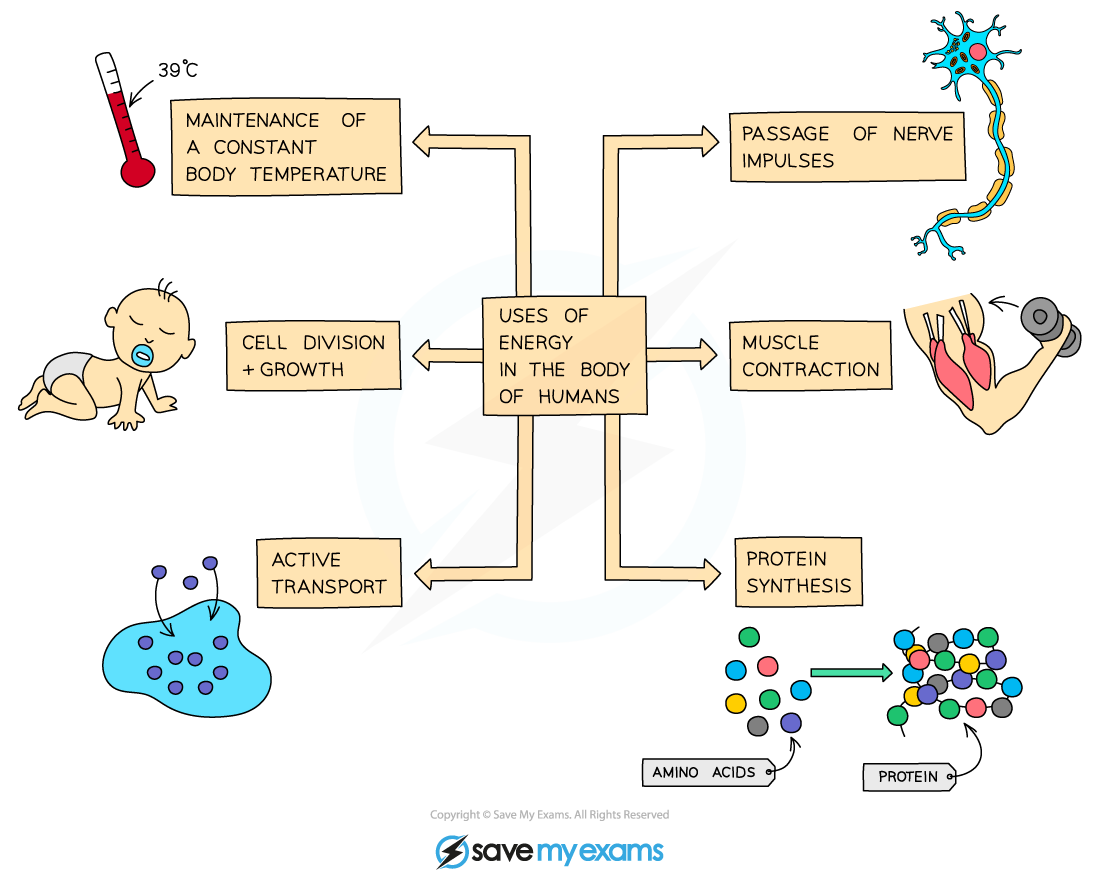Respiration in cells (SQA National 5 Biology): Revision Note
Exam code: X807 75
Energy & ATP
Respiration is a series of enzyme-controlled reactions
It is a chemical process that involves the breakdown of nutrient molecules (specifically glucose) to release the energy stored within these molecules
The energy released is used to generate ATP
Respiration can take place with oxygen (aerobically) or without oxygen (anaerobically)
Much less energy is released for each glucose molecule broken down anaerobically compared to the energy released when it is broken down aerobically
Respiration occurs in all living cells; most of the chemical reactions in aerobic respiration take place in the mitochondria
Cells with a higher energy requirement e.g. muscle cells will be adapted to possess a higher number of mitochondria to support energy requirements
Uses of energy in living organisms
The energy released during respiration is used to carry out many processes
Muscle cell contraction
Protein synthesis
Cell division
Growth
Active transport across cell membranes
Generation of nerve impulses
Maintaining a constant internal body temperature


Unlock more, it's free!
Did this page help you?